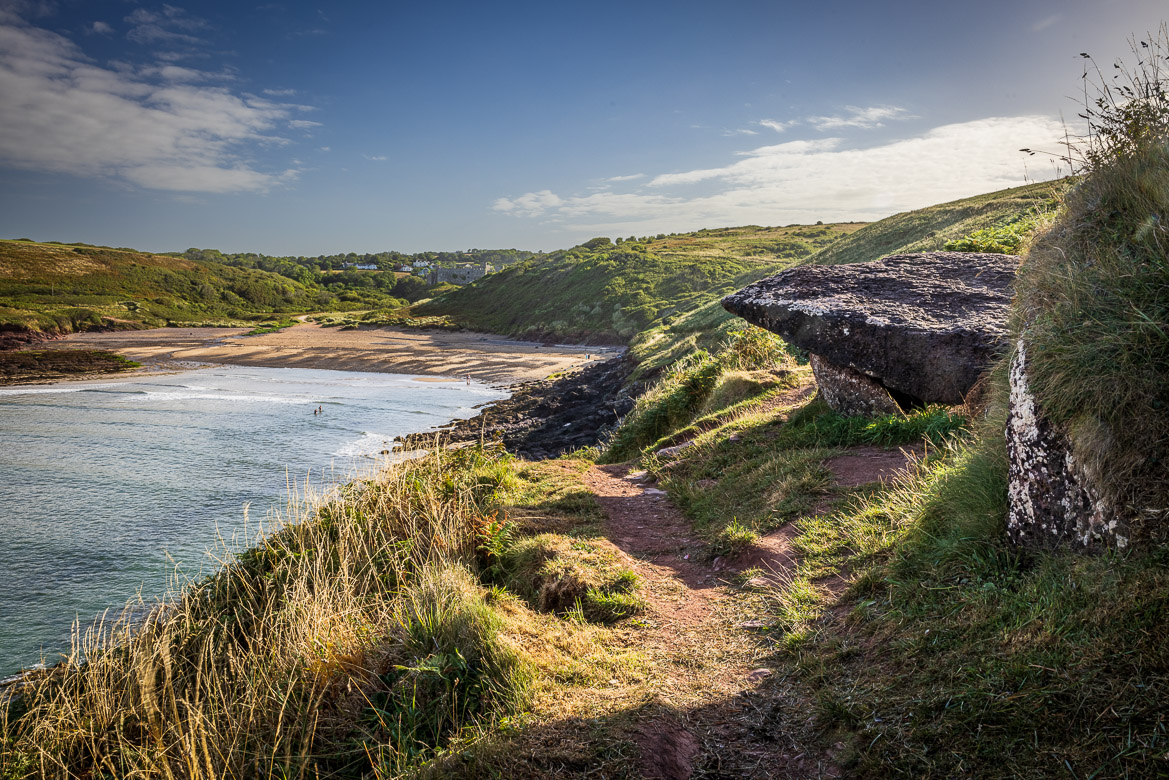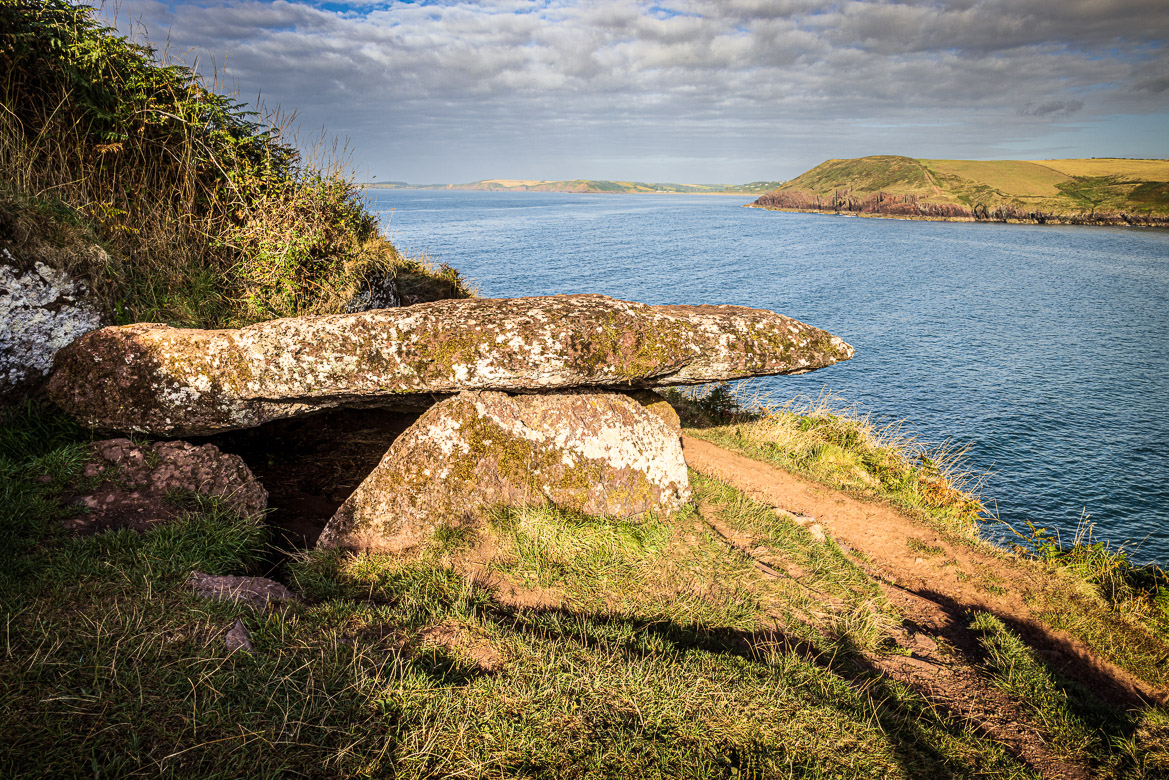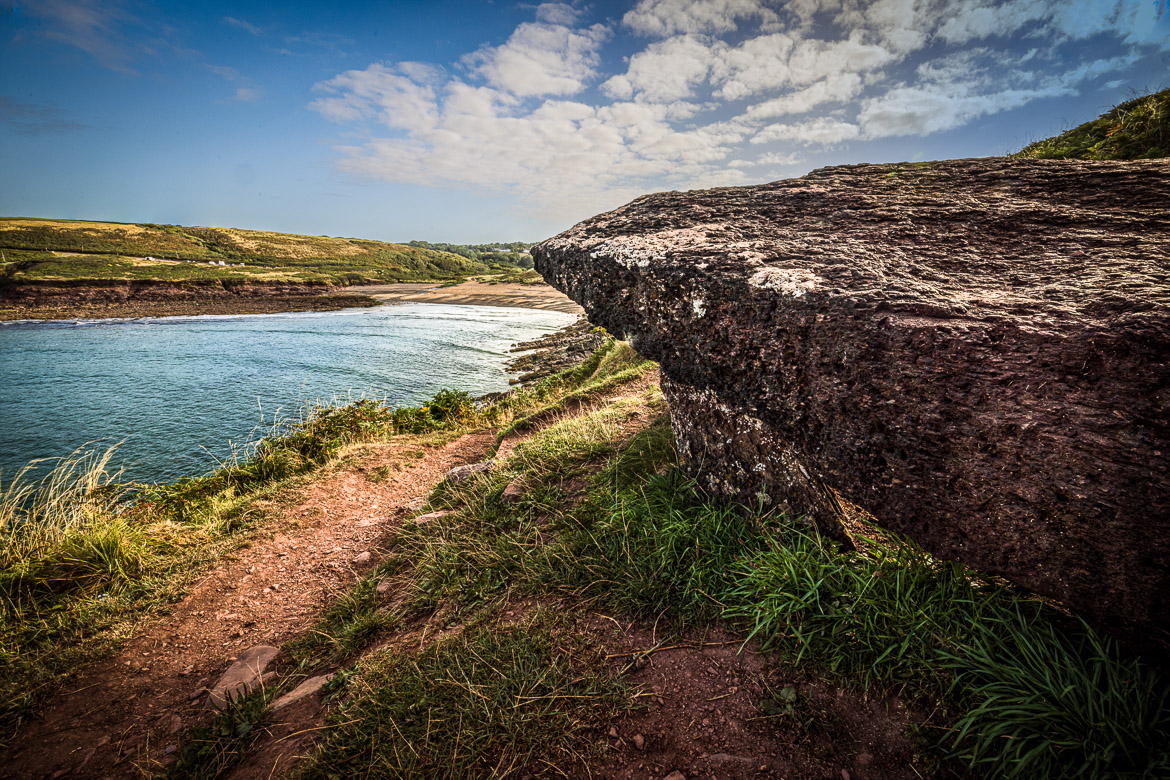
King’s Quoit is a Neolithic burial chamber in Manorbier in South Wales. I have published photos from Manorbier and its castle (that can be seen in the background in the village above the bay) earlier in January.
It is a dolmen, or portal, single chamber burial tomb built in the Late Stone Age period around 3,000 years BC. It has two small side stones supporting a large capstone, 4 metres long by 2.5 metres wide with a thickness of around 50 cm. All stones are red sandstone. The capstone is supported by the higher ground on one side and the tomb itself is partially below ground.
Legend tells that a king is buried here, but we don’t know. The people living here at that time had no written language and very little is known of the culture. The word quoit is used for the large flat covering stone of a dolmen. Whoever was buried here, he got a final resting place of magnificent beauty and serenity that I could feel t,000 years later sitting on the stone admiring the views of the sea in three directions.

Dolmens exist all over the world. The largest concentration can be found on the Korean Peninsula, with more than 35,000 dolmens. They were often covered with smaller stones or earth to form a mound, but over time the covering has eroded away, exposing the stones itself. I have previously photographed more impressive dolmens like this on Dartmoor, but the location of this one was what captured my mind.

